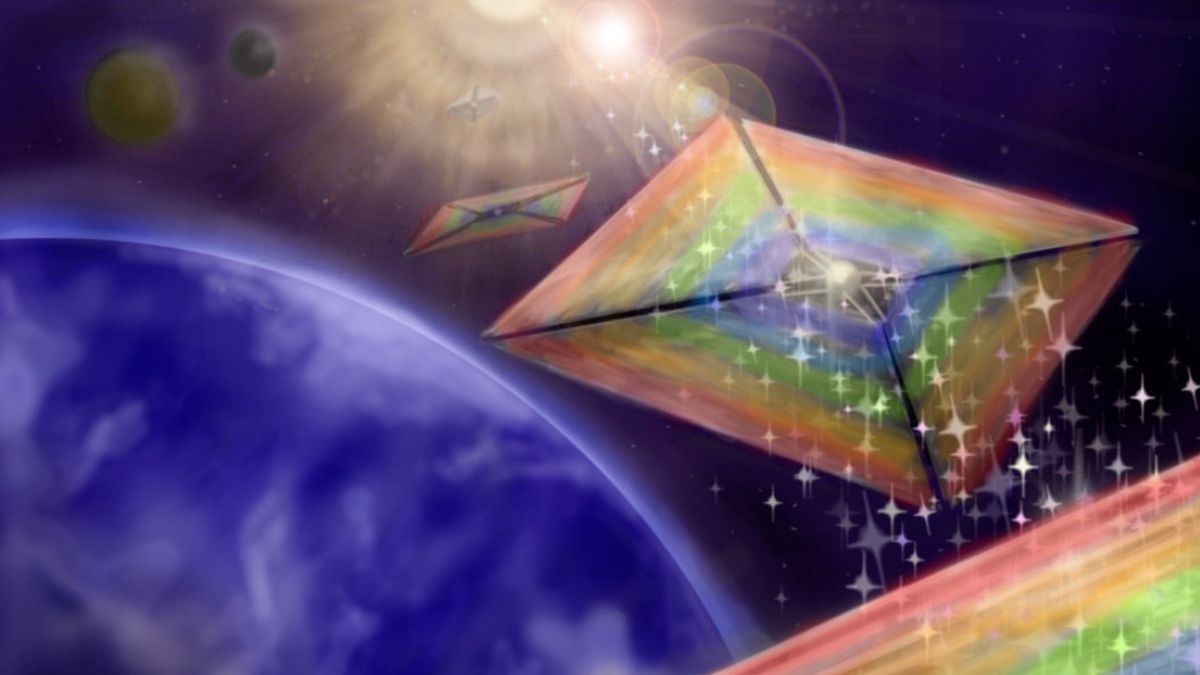JAKARTA - NASA has just announced they have a new solar sail concept that could make future spacecraft more efficient and maneuverable.
Dubbed the Diffractive Solar Sailing project, it is now entering phase III development under the NASA Innovative Advanced Concepts (NIAC) program, which could be used on probes that rely on solar radiation to glide over the sun's polar regions.
"As we venture deeper into the cosmos than ever before, we will need innovative and cutting-edge technology to drive our missions," said NASA Administrator Bill Nelson.
"The NASA Innovative Advanced Concepts program helps unlock visionary ideas, such as novel solar sails, and bring them closer to reality."
The solar sail concept is an old concept, first proposed in the 1980s. The point is to equip the ship with light sails that translate the pressure from solar radiation into propulsion.
The problem is that the solar sail has to be much bigger than the spacecraft it drags on. Even a low-thrust solar sail would require nearly a square kilometer, and would have to be kept intact throughout the mission.
Didn't even have much choice but to fly towards the sun, so had to make sacrifices for either power or navigation. Futuristic diffraction light screens can overcome this shortcoming.
The project is being carried out at the Johns Hopkins University Applied Physics Laboratory under the leadership of Amber Dubill and co-investigator Grover Swartzlander. The project progressed through phase I and II trials, which saw the team develop a concept and feasibility study on a diffraction light screen.
A diffraction light screen, as the name suggests, takes advantage of a property of light known as diffraction. When the light passes through the small hole, the light spreads to the other side.
It can be used to make lightweight sails more maneuverable so they don't have to go wherever the solar wind blows.
"Exploring the universe means we need new instruments, new ideas and new ways to get somewhere. Our goal is to invest in technology throughout their life cycle to support a strong innovation ecosystem," said the association Administrator for NASA's Directorate of Space Technology Mission (STMD), Jim Reuter.
In Phase III, NASA is disbursing $2 million to the research team over two years, to continue technology development in preparation for potential demonstration missions in the next few years.
Work under phase III will optimize sail materials and conduct ground tests to support this conceptual solar mission. An orbit that passes through the Sun's north and south poles is difficult to achieve using conventional spacecraft propulsion.
Light diffraction light sails, propelled by the constant pressure of sunlight, could place constellations of science spacecraft in orbit around the Sun's poles to advance understanding of the Sun and improve our space weather forecasting capabilities.
The English, Chinese, Japanese, Arabic, and French versions are automatically generated by the AI. So there may still be inaccuracies in translating, please always see Indonesian as our main language. (system supported by DigitalSiber.id)













